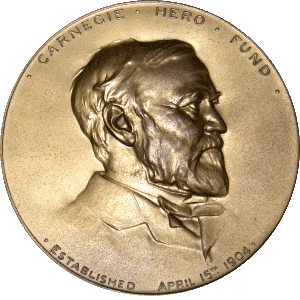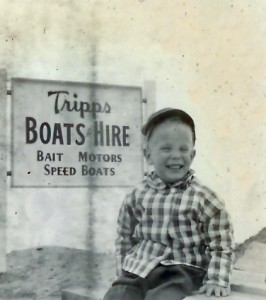What this is all about
By Scott B. Anderson
For me, it’s very personal. My grandfather, Russell W. Anderson, was among the heroes during rescue attempts after the Robert E. Lee went aground. He set off in a small rowboat from shore with state trooper John Horgan to try and rescue William Cashman, Edward Stark, Frank Griswold and the five others whose boat had capsized enroute back from the scuttled Robert E. Lee.
Anderson, 23, and Horgan, 33, rescued Cashman, who later died, and Earl Sampson. For their heroism, Anderson and Horgan were awarded Carnegie Medals. (A few years later, my grandfather saved another man from drowning, this time at nearby Churchill’s Landing). Three others were awarded Carnegie Medals as well.
The Point holds many other memories for me.
Our father, for some reason, got his jollies when we were very young by pretending he was driving over the edge of the bluff. Not once. But again and again over the years. He was amused; our mother in the front seat and my siblings and I, hysterical in the back seat, not so much. He also carted us up there in hurricanes, tropical storms and northeasters.
One of my favorite pictures is of me from the late ’50s, sitting near the Tripp’s Boat Livery sign just a few feet from the memorial. I use the mugshot for the profile picture on my Facebook page and other web sites.
Our aunt Eleanor Bartlett Slade (Russell’s sister-in-law) owned the house just a few yards south of the memorial. The closed-in porch that literally almost hung over the bluff had spectacular views — including those of the fateful Mary Ann Rocks.
The Point also brings very sad memories of another tragedy. A 22-year-old family member, boating about a mile offshore in the summer of 1985, went missing and is presumed to have drowned.
My grandfather’s sister, Elizabeth, died in 1993 when her car veered off the narrow road to the Point, through a guardrail, and careened over the bluff.
Our family has been in Manomet since the 1620s and many relatives still live near the Point and the farms and homesteads that have been home to Andersons, Holmeses and Bartletts for centuries. The hearts of those of us who now live far away are still there and will be always.
Our hearts, too, are with the brave and selfless men of March, 1928. They deserve to be officially recognized as heroes, nearly a century on. And they deserve a memorial marker with nicely manicured grass, a granite and wrought iron fence, a few flowers and a flagpole, maybe.



